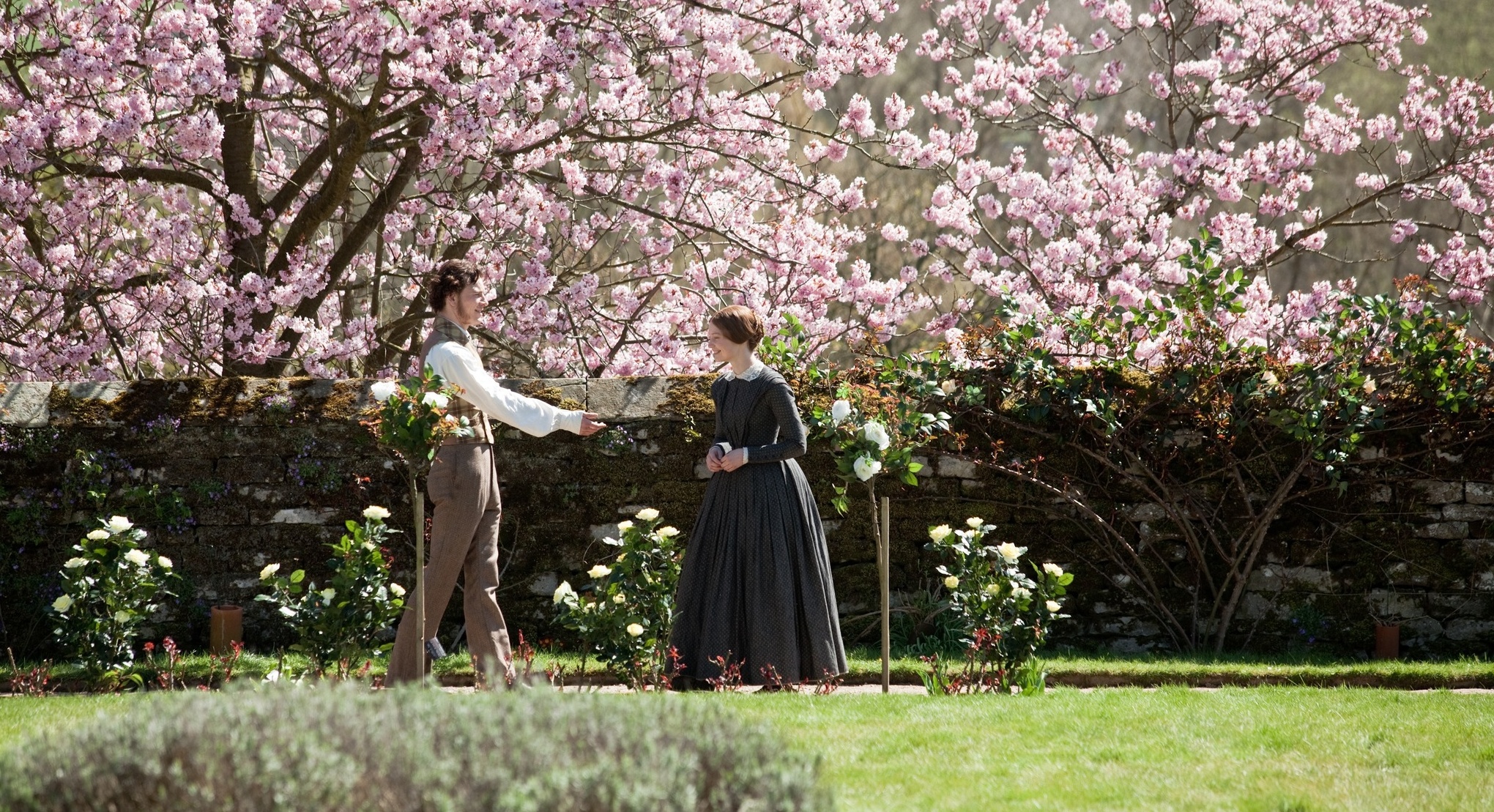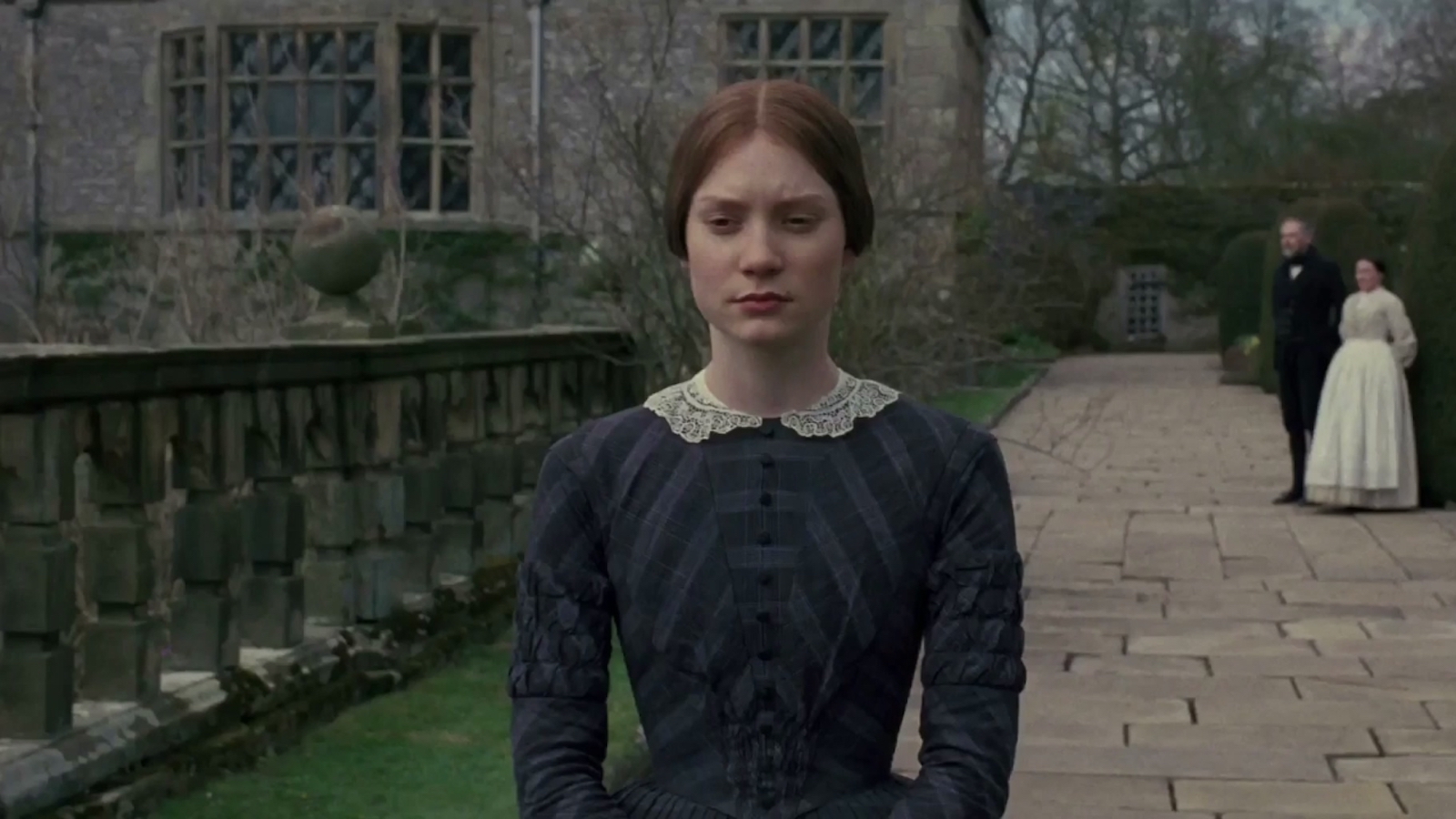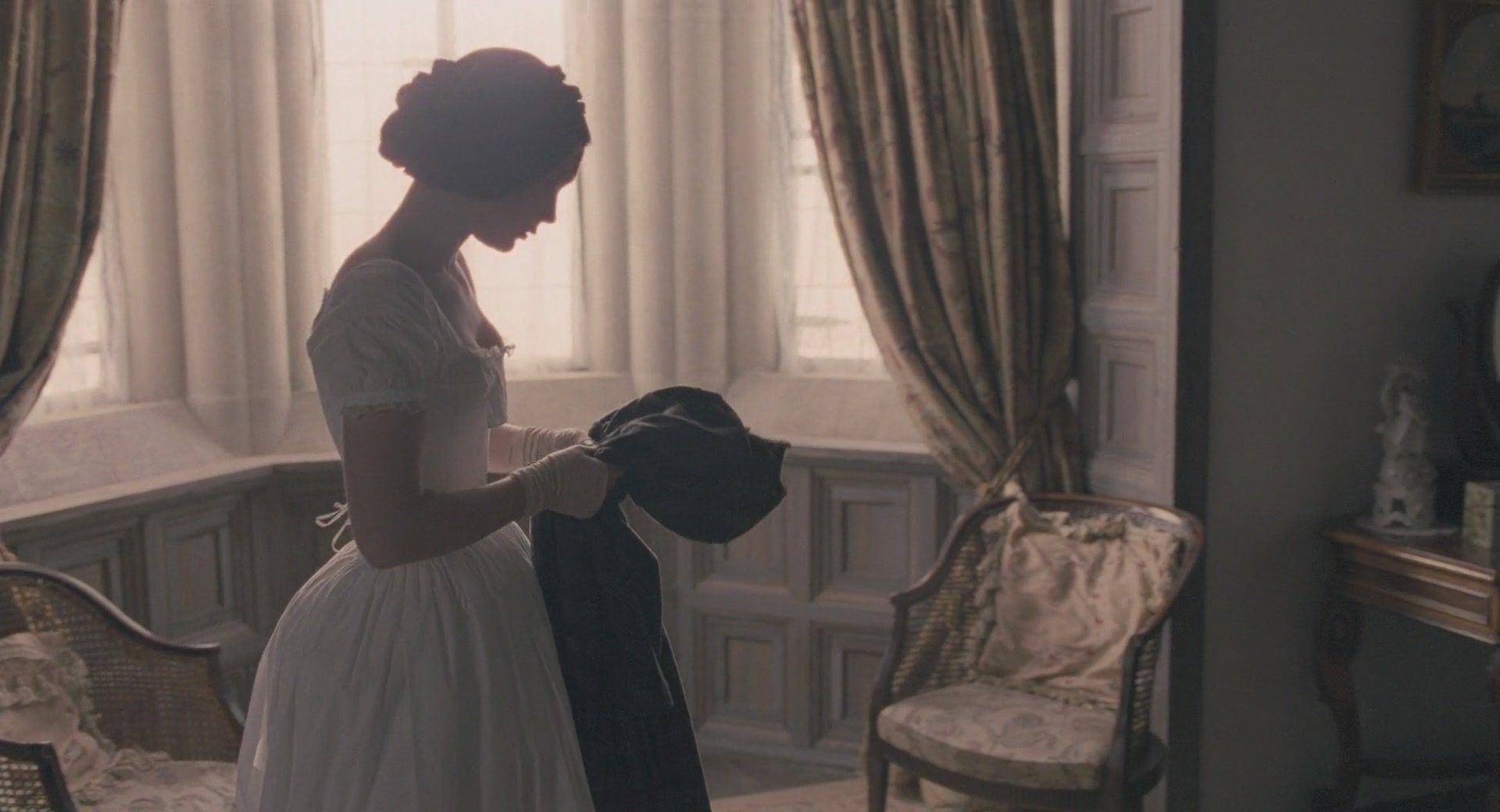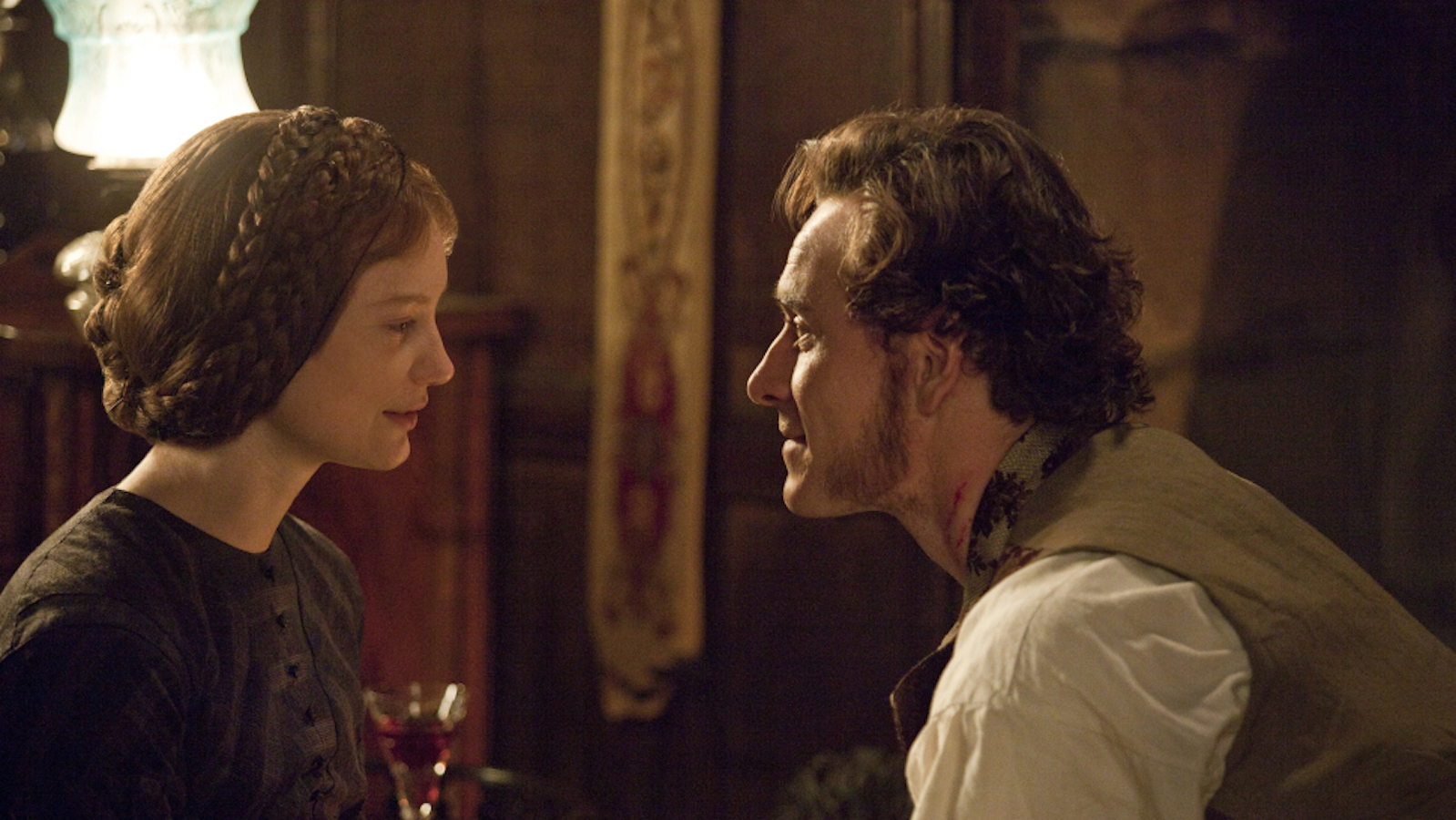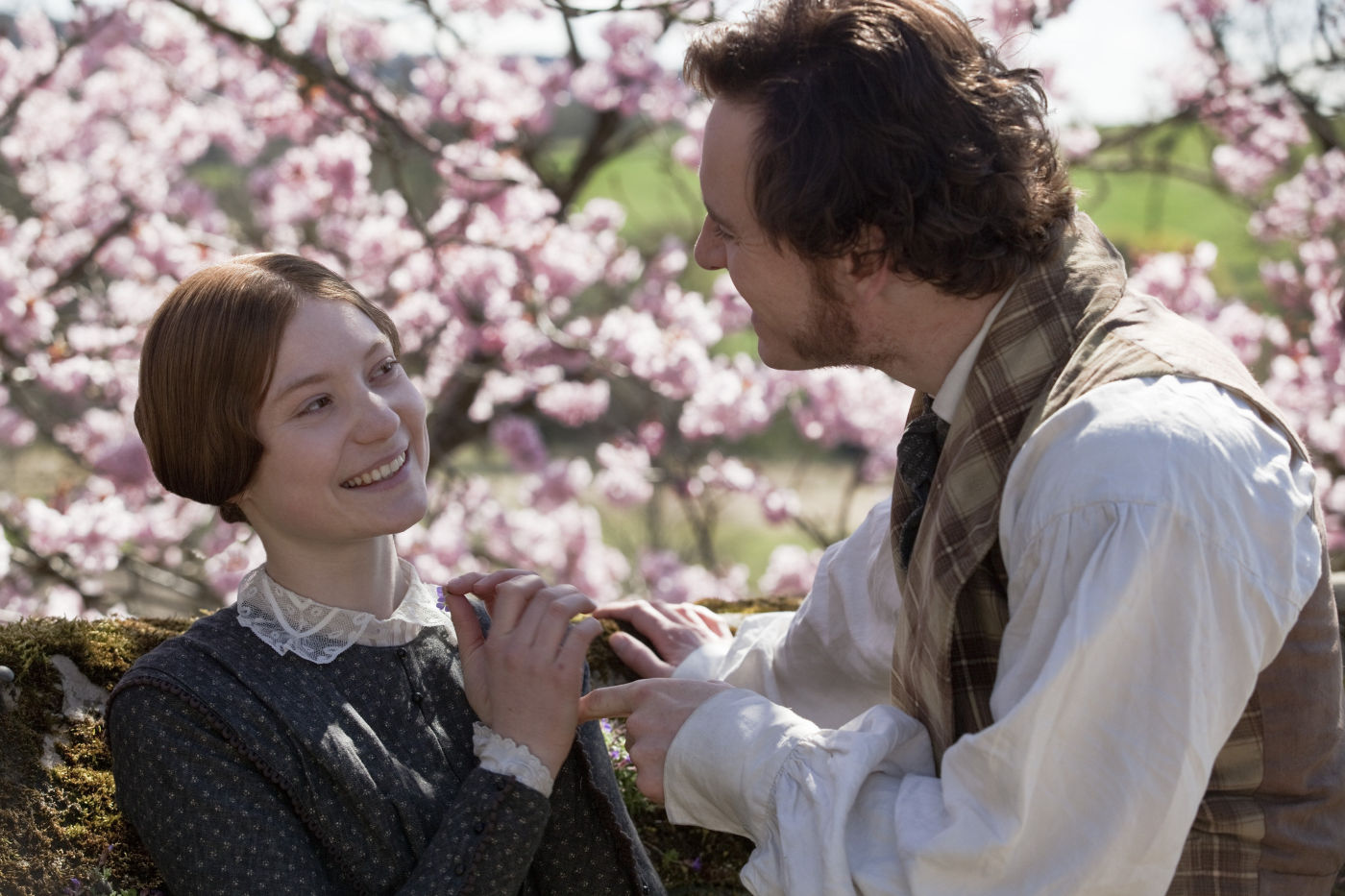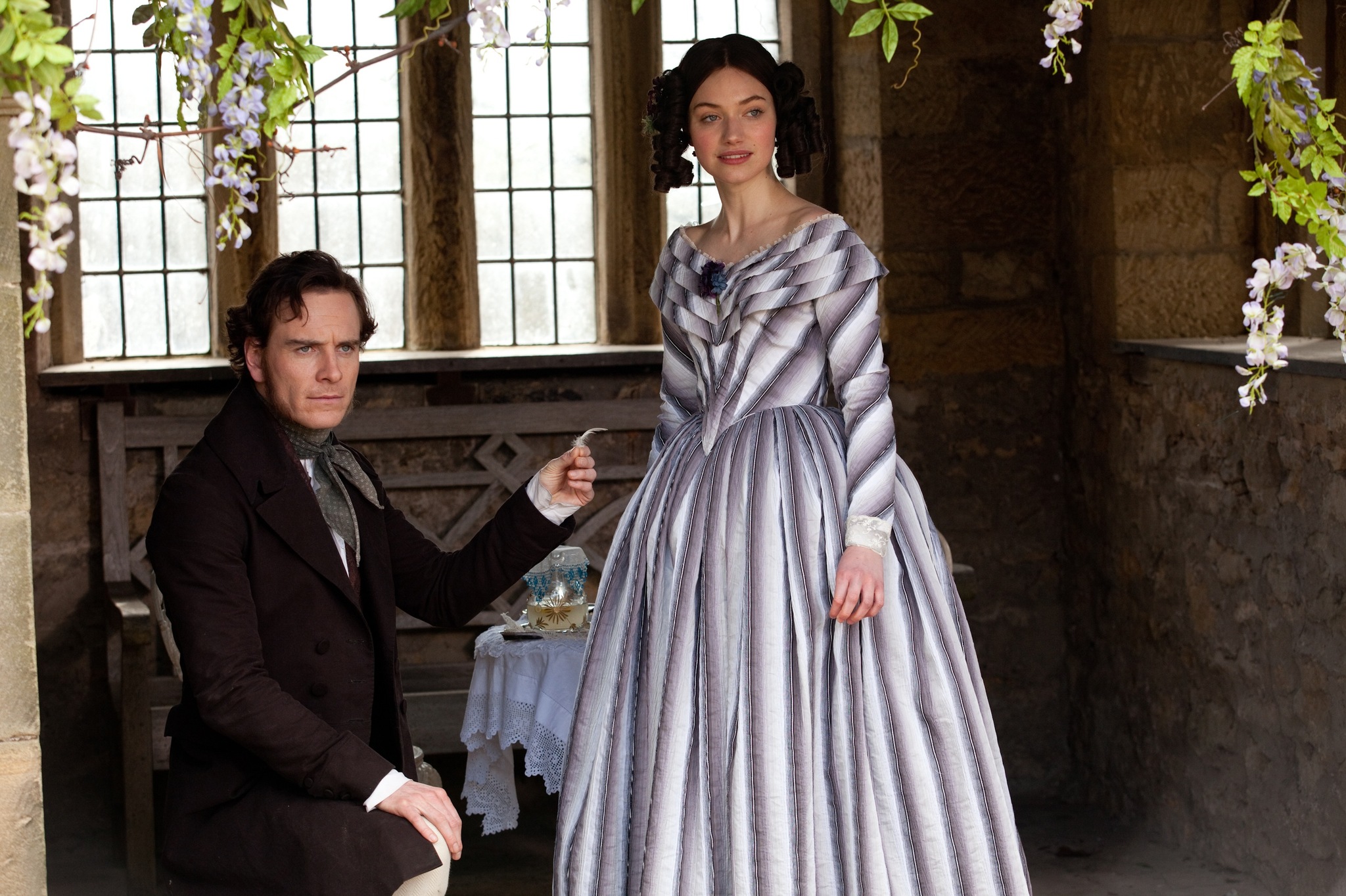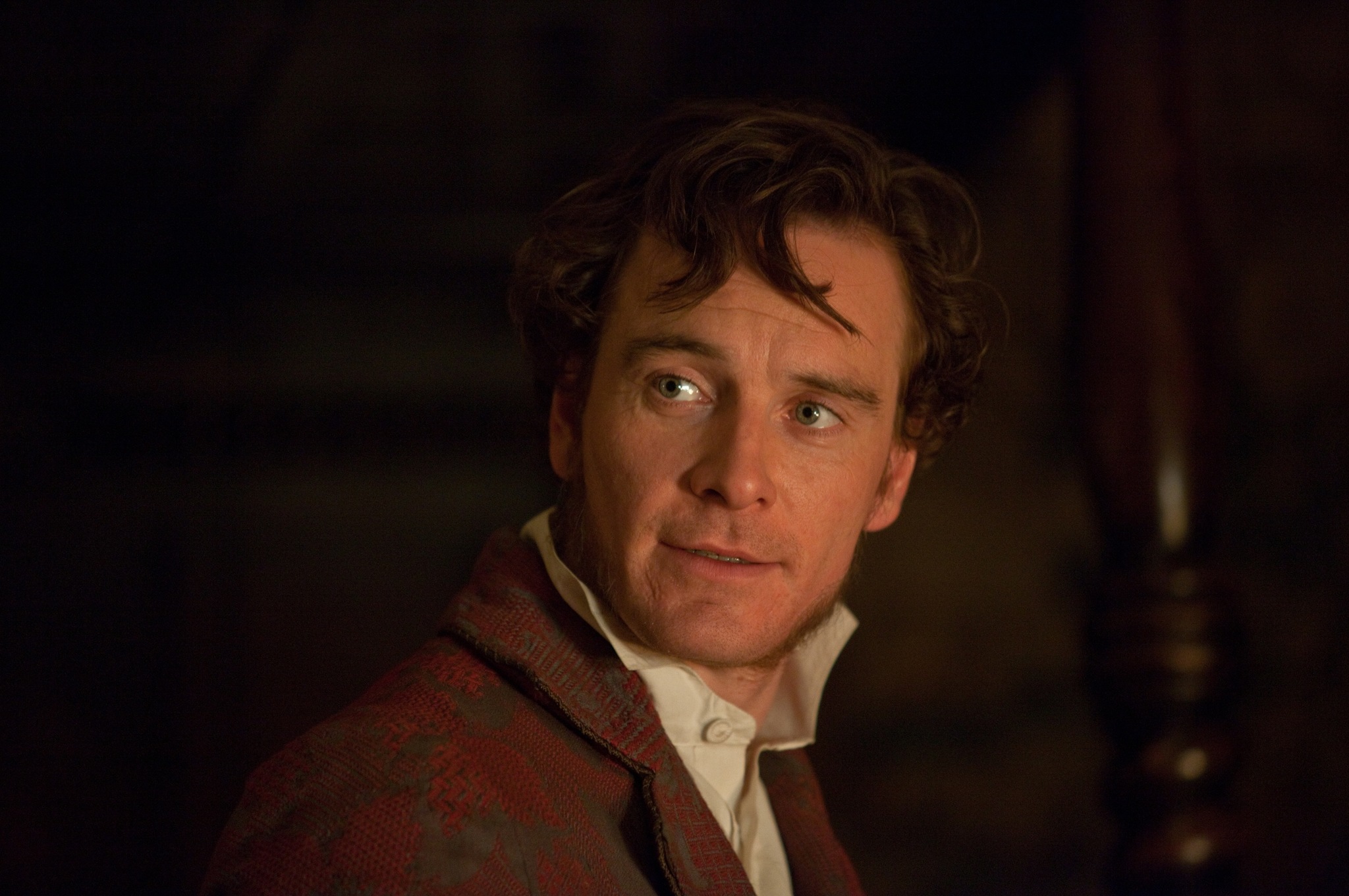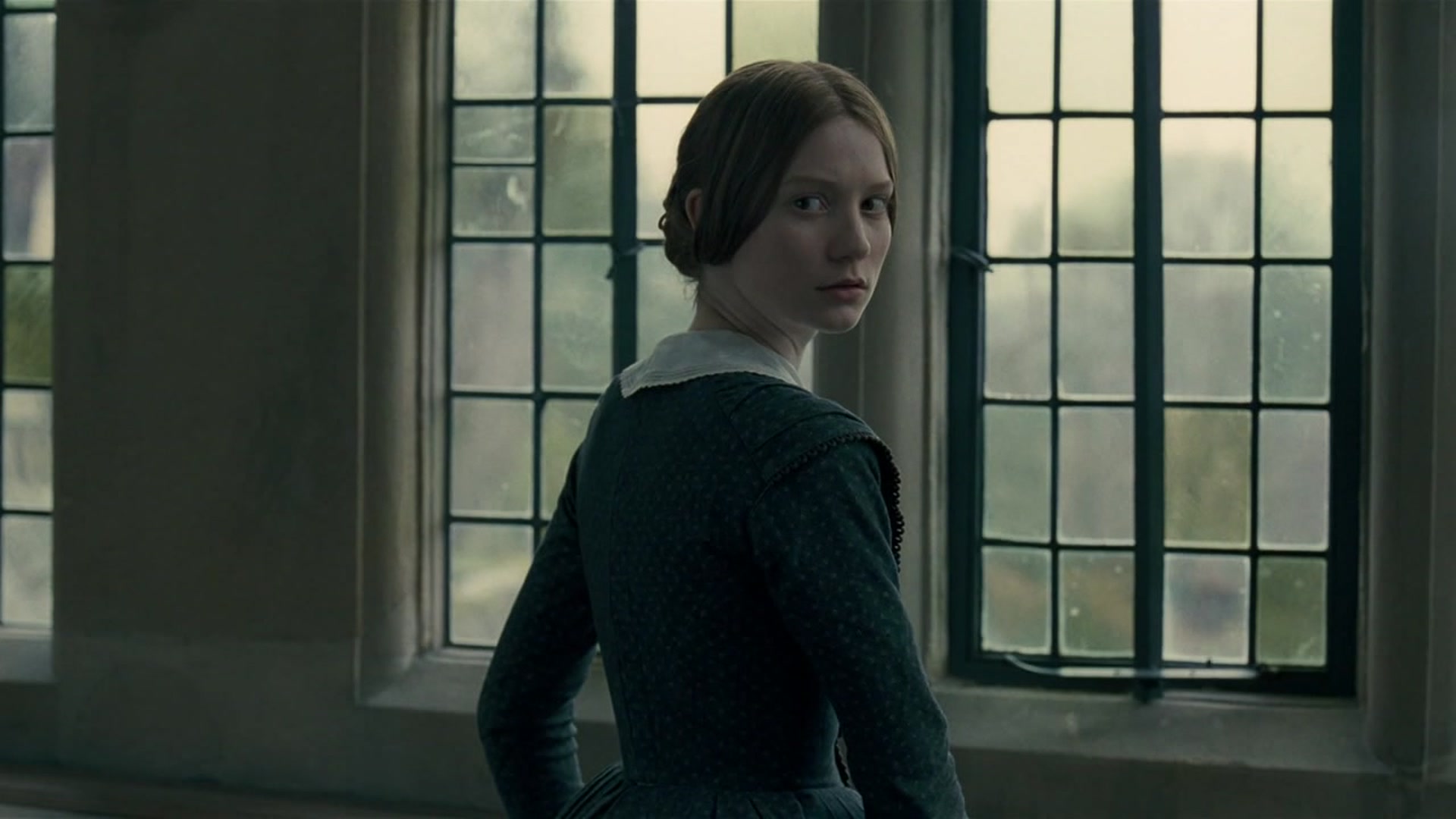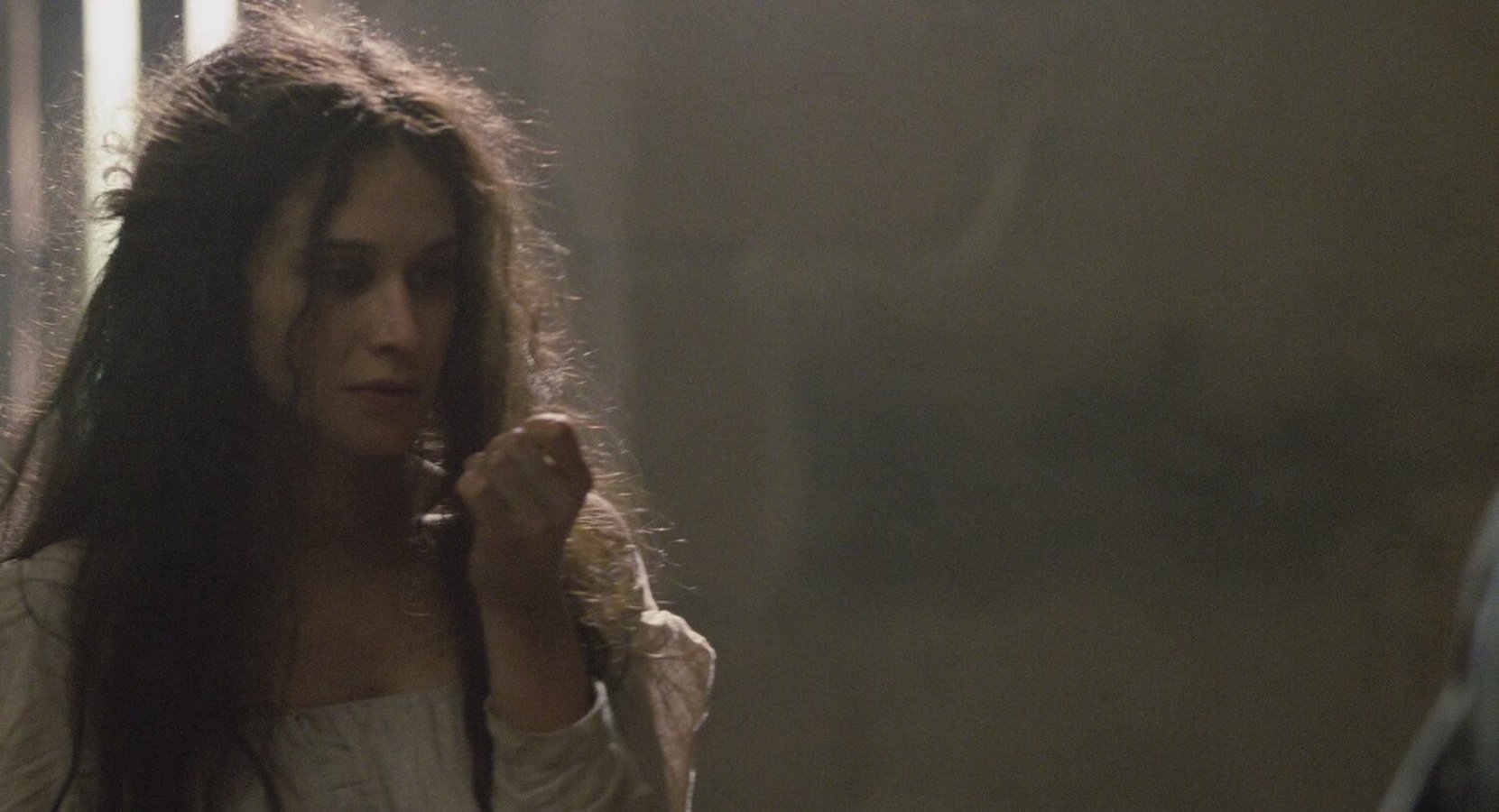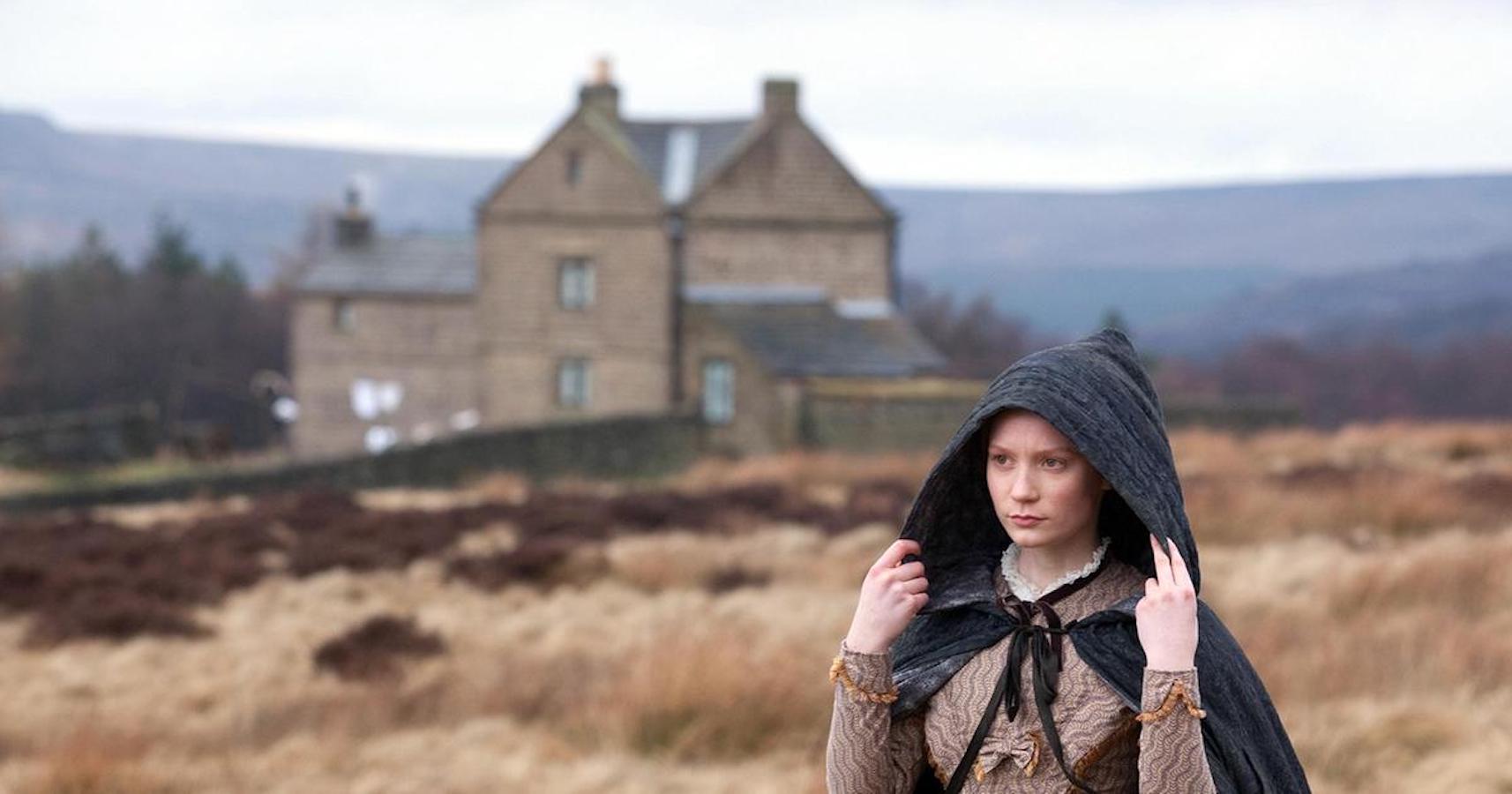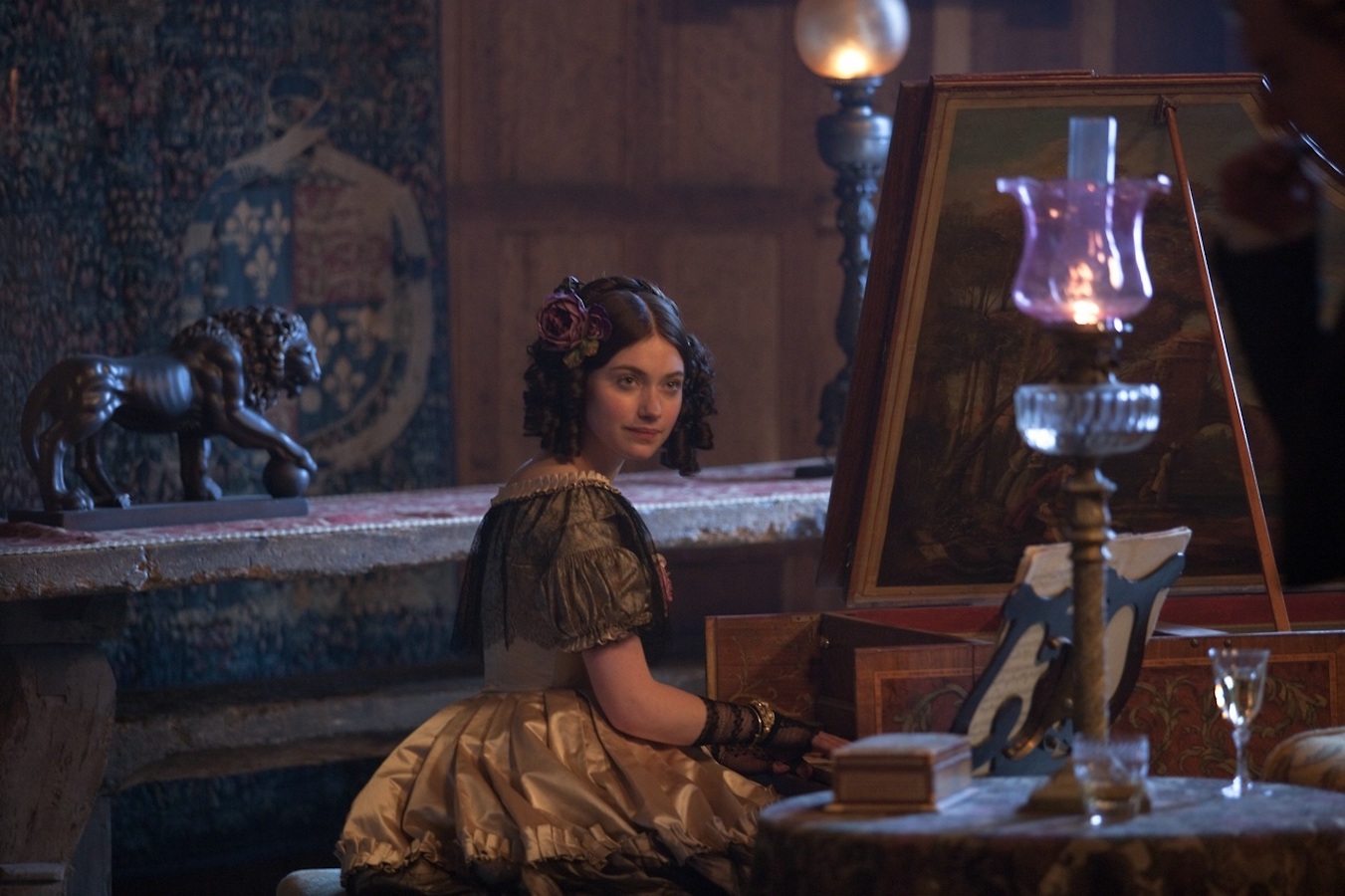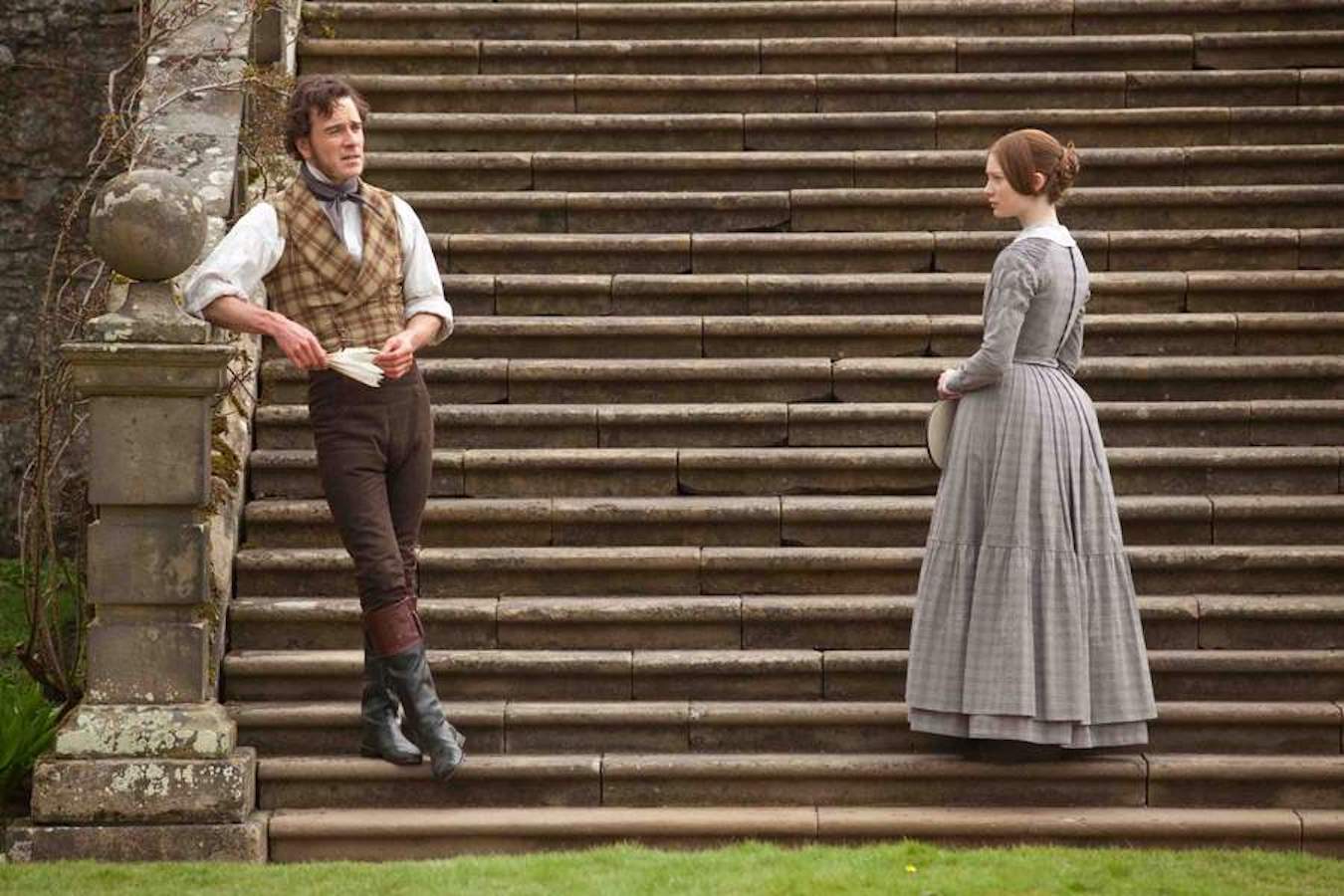Table of Contents Show
Charlotte Bronte’s Jane Eyre cannot be examined through the lens of feminist theory without questioning whether it reinforces or undermines the patriarchy. Within Jane Eyre there is an overwhelming religious theme; Jane is a devout Christian and because readers see the world through her eyes, Christianity is an important part of the story that cannot be ignored. Jane’s place in society hinges directly on where God says her place in society should be: under the guidance of a man. Thus, to examine this novel’s stance on reinforcing or undermining the patriarchy, one must take into account that religious subtext.
In Bronte’s novel, readers follow a young woman named Jane Eyre as she attends – and eventually becomes a teacher at Lowood. School. Yearning for adventure, Jane accepts a Governess position and unexpectedly falls in love with her employer, Mr. Rochester. When it is revealed that Mr. Rochester is still married to a woman named Bertha Mason. Jane tries to move on with a new man — St. John Rivers — but finds herself called back to the one she truly loves.
Mr. Rochester and St. John Rivers are the central two patriarchal figures in Jane’s life and she spends the majority of her life both indebted to and defiant of them both. By viewing Bronte’s Jane Eyre through the lenses of patriarchal ideology and feminist theory, it is possible to discuss the ways in which the characters within both reinforce and undermine the patriarchy.
The Patriarchy In ‘Jane Eyre’
Patriarchal Ideology involves a patriarchal society in which there is a disproportionate power balance between men and women (( Walby, Sylvia. “Theorizing Patriarchy.” 1989. )). This ideology is the exact opposite of Feminist Theory which encourages critical reading to expose how the patriarchy works within a text. Feminism’s main premise is that women must advocate for equality and rebel against the ways in which they are suppressed — economically, politically, socially, etc. — by the patriarchy (( Chodorow, Nancy. “Feminism and Psychoanalytic Theory.” 1944. )).
When reading through this lens, Feminist Theory calls on readers to examine representations of women in literature. The idea that Jane Eyre may appear to be a feminist piece of literature can certainly be argued, but perhaps that argument is a bit of a self-fulfilling prophecy. The Guardian’s Chief Culture Writer, Charlotte Higgins, writes that “Many people would question the existence of something called ‘patriarchy’ to begin with – pointing to the strides made in gender equality over the past century, and insisting that instances of sexism are individual and isolated, destined to fade further over time, rather than evidence of a persistent structure of inequality” (( Higgins, Charlotte. “The Age Of Patriarchy: How An Unfashionable Idea Became A Rallying Cry For Feminism Today.” 2018. )).
A similar logic can be applied to Bronte’s text. The narrative of Jane’s life can be read as a powerful tale of an individual woman who follows her heart, passions, and instincts; an individual woman who goes against not just the men in her life but the patriarchal society in which she lives.
An Individual Woman Cannot Represent The Narrative
The issue is that Jane is not just an individual woman. She is — as every human being — a participant in the greater structure of society. So while questions like, “Why does Jane do what she does,” or, “What motivates Jane’s actions,” are valuable, they may not provide answers that are truthfully representative of Jane’s narrative from a feminist perspective. Perhaps a better question would be: Do Jane’s actions serve her sense of self, or do they further fulfill her expected roles in life?
Choosing to leave her position as a school teacher and take on a Governess position can be seen as Jane following her own dreams, wishes, or desires. But this employment change is not drastic; both positions are expected to be filled by women, and both positions are expected to teach younger women how to behave acceptably in society. Even when Jane chooses to return to Mr. Rochester, she is not necessarily “only” following her own desires. It would be somewhat unacceptable for a woman to live on her own, so Jane must seek out a husband.
The fact that she chooses one man over another is not inherently feminist. It could be argued that her decision to make the choice — especially considering it is the choice society would likely frown upon the most — is representative of feminist ideals, but to what end? Jane may choose to choose but doing so is not an act of rebellion that will distance her from the patriarchy.
Interpersonal Relationships Under Patriarchy
Two particularly enlightening lines of inquiry can be followed through Jane Eyre’s narrative: Are the women in the text represented as “other”? And what are the dynamics and power relations involved in their interpersonal relationships? To examine the characters of Jane Eyre, Mr. Rochester, St. John Rivers, and Bertha Mason through a feminist lens, their descriptions need to be analyzed above all other things; specifically, their descriptions from both a woman’s and a man’s perspective.
As the narrator of the book, most of the character descriptions come from Jane Eyre herself. As a woman with strong independent ideas about what it means to be a woman, it can be assumed that Jane is a feminist; or, at least insomuch as she could have been during her time. Since Feminist Theory calls on readers to “examine representations of women in literature by both men and women,” the lens through which Jane sees herself as a woman is an important one.
“…I ever wished to look as well as I could, and to please as much as my want of beauty would permit. I sometimes regretted that I was not handsomer: I sometimes wished to have rosy cheeks, a straight nose, and small cherry mouth; I desired to be tall, stately and finely developed in figure; I felt it a misfortune that I was so little, so pale, and had features so irregular and so marked.”
CHarlotte Bronte
Jane may have this opinion of her own physical appearance because it has been drilled into her since childhood. Even the servants of her childhood home, technically beneath Jane’s social status, made comments like, “…if she were a nice, pretty child, one might compassionate her forlornness; but one really cannot care for such a little toad as that” (( Bronte, Charlotte. “Jane Eyre.” 1847. )). The only male opinion on Jane’s appearance comes from Mr. Rochester who never calls her ugly, but like Jane’s own description of herself agrees that she is plain.
In a way, this reinforces the patriarchy because Jane’s feelings are heavily influenced by the men in her life. And although women comment on her plainness as well, it can be argued that those women have been conditioned by the patriarchal society to value beauty above all else.
Intellectual Versus Physical
Jane’s intellectual and artistic abilities serve no purpose to anyone except herself; Mr. Rochester only enjoys her wit because it pleases him. The power difference between Jane and those who affirm her plainness is also repetitive. When she is young, the servants have control over her as she is not a child of the household. When she is an adult, Mr. Rochester is not only superior to her in age and rank, but he is also Jane’s employer. How Jane views Mr. Rochester is equally accountable for this text upholding patriarchal values.
One of Jane’s first interactions with Mr. Rochester involves him asking her if she finds him attractive. Jane answers honestly: no. We never get any observations made by other men or women on Rochester’s appearance, but by the end of the novel we know he has been the object of attraction to at least three different women; this, however, can be chalked up to the women’s desire for a suitable social match and monetary stability rather than Rochester’s good looks.
Even Jane admits that Rochester’s attractiveness doesn’t come from his physical features, “And was Mr. Rochester now ugly in my eyes? No, reader: gratitude, and many associations, all pleasurable and genial, made his face the object I best liked to see…” (Bronte). This, again, reinforces the patriarchy because Jane admits that common features and actions like gratitude and geniality are what make Rochester attractive to her whereas Jane herself is constantly scrutinized for her physical appearance alone, if not by others then by herself. Jane’s observations of Rochester are the exact opposite of her observation of St. John Rivers, although both serve to reinforce the patriarchy.
St. John Rivers is described by Jane as, “…tall, slender; his face riveted the eye; it was like a Greek face, very pure in outline: quite a straight, classic nose; quite an Athenian mouth and chin…His eyes were large and blue, with brown lashes…careless locks of fair hair” (Bronte). Rivers is deemed physically attractive by Jane and, unlike Rochester, seems to garner attention from a woman because of those physical looks. This might seem to undermine the patriarchy but in reality, it continues to reinforce it because St. John Rivers isn’t afforded certain opportunities in life because of his physical appearance, rather he is who is he because of his intellectual ability and charisma. If Jane were beautiful rather than plain in a society filled with patriarchal ideologies, her intellectual abilities might be taken more seriously (( Lensman, Rohini. “Undermining Patriarchy, Empowering Women.” 2002. )).
Bertha Mason: A Manifestation Of “Other”
When examining literature through a Feminist Theory lens, Bertha Mason can be considered through many of the filters the ideology wishes readers to examine. Not only is Bertha represented as “other” by both male and female standards, but she is involved in a power balance of gross proportions. Mr. Rochester describes Bertha, “I found her a fine woman, in the style of Blanche Ingram; tall, dark, and majestic” (Bronte), in a way that reinforces patriarchal ideologies because, in that kind of society, beautiful women are valuable to men. Jane describes Bertha, “…she parted her shaggy locks from her visage, and gazed wildly at her visitors. I recognized well that purple face–those bloated features” (Bronte), in a way that also reinforces the patriarchal pitting of women against women. Jane instantly evaluates Bertha’s physical appearance rather than her hostage-like situation.
Examining male and female characters through the eyes of Jane shows that not even she herself is a truly feminist character. Every description readers are offered, be it through Jane’s own opinion or the dialogue of another character, is another example of how women are valued for their physical appearance, and men are both excused from and allowed to benefit from that specific societal pressure. Even the women themselves, products of the patriarchal society in which they live, feel obligated to judge one another not on their intellectual or character attributes, but on whether or not they’re pretty and womanly.
Readers also get an overwhelming example of women being treated as “other” with the characterization of Bertha Mason by both men and women. Jane’s position to every male she encounters makes it clear that the power dynamics between men and women fully reinforce the patriarchy. Even though she does use her wit more freely around men than other women might, she is sure never to overstep her boundaries in the woman-to-man or employee-to-employer relationship. Also reinforcing the patriarchy is the religious subtext in which readers must view Jane’s world. Because she is a woman of God, Jane tries to never cross any boundary that would displease Him, including being insubordinate to the male figures in her life.
As it would have been interpreted in Jane’s world, Christianity doesn’t allow for feminism. Bertha’s description is particularly interesting in terms of how patriarchal ideals and religious subtext intersect. At points, Bertha is literally described in a way that may remind readers of demonic possessions depicted in modern-day horror movies. Jane describes Bertha by saying, “What it was whether beast or human being, one could not…tell: it growled, seemingly on all fours…it was covered with clothing, and a quantity of dark, grizzled hair, wild as a mane, his its head and face” (Bronte). Bertha is arguably the most “othered” character in Bronte’s text, but post first glance, she is not all that dissimilar to Jane.
Both women have been imprisoned – at different points throughout their life – in physical and psychological ways. Instead of the two women being portrayed to readers as equals, Bertha is stripped of her humanity and depicted as insane and inhuman while Jane is lauded as righteous and fundamentally “good” (( Gilbert, Sandra M. and Gubar, Susan. “The Madwoman In The Attic: The Woman Writer And The Nineteenth-Century Literary Imagination.” 1979. )). This exposes how Jane and Bertha represent the same opposites within Christianity: good and evil; heaven and hell. Their fates mimic this too, with Bertha dying in a fire and Jane being allowed to marry her chosen partner under “pure” conditions (( Atherton, Carol. “The Figure Of Bertha Mason.” 2014. )).
Race, On The Hierarchy Of “Otherness”
Stopping just short of fully describing her skin color, the text alludes to Bertha being a non-white woman. This adds an entire layer of depth and nuance to any analysis of her character. The intersectional implications of Bertha’s identity are beyond the scope of this article, but it would be remiss not to acknowledge them (( Coleman, Tyrese L. “Reading Jane Eyre While Black.” 2017. )) (( Cho, Keunjung. “Contextualizing Racialized Interpretations Of Bertha Mason’s Character.” 2003. )).
Bertha — at her core — exists as a woman to whom Jane is comparatively “normal.” Because the narrative follows Jane, she garners sympathy from readers not just in spite of her “otherness,” but because of it. Readers root for Jane because her thoughts and emotions are relatable. In turn, readers root against those who oppose Jane. This creates a hierarchy of “otherness” for both society within the narrative and readers. Although Blanche Ingram may be considered one of the main individual antagonists in Jane’s narrative, she arguably represents all of the women in an “acceptable” society. Her character exists only as a plot device, driving Jane and Mr. Rochester’s romance forward through jealousy.
Blanche could be any moderately wealthy, attractive white woman and nothing within the narrative would change. She is a character that readers can root against, but because she lacks individuality and represents such a broad concept, it is not as satisfying to witness her downfall. Any blow she is dealt as an individual feels unfinished in the face of her representative identity. Unlike Blanche, Bertha is a much more multifaceted obstacle. Because she is still Mr. Rochester’s wife, Bertha legally stands between him and Jane. By virtue of her secret existence within Thornfield (and – in a more literal sense – her rendezvous throughout the household at night), she physically comes between Jane and Mr. Rochester.
Perhaps most importantly, Bertha is a spiritual obstacle. Jane’s religiously-driven moral compass prevents her from even considering a life with Mr. Rochester. Not only is he married to Bertha, and not only did he attempt to hide it, but he planned to continue hiding it for – presumably – forever. All of these things violate the core tenets of Jane’s religious beliefs. Interestingly, these violations are not necessarily what deters Jane; nor do Bertha’s captivity and abuse at the hands of Mr. Rochester appear to be a dealbreaker. Her issue is, arguably, with his lies about it, and the spiritually binding marriage he remains locked into so long as Bertha remains alive.
This sees Bertha marked as the narrative’s One True Enemy; her existence gives society (within the narrative), Jane, and readers a middle ground on which to stand. Jane’s personal response to the discovery of Bertha’s status is directly tied to the hierarchy of “otherness” as it is explored above. This hierarchy is not random, and it is inextricably linked to Bertha’s implied race. Bertha is marked by society as even more “other” than Jane because non-white ancestry and supposed psychological conditions work to depict her as a feral, uncontrollable creature that is not entirely human. In comparison, Jane’s feminist tendencies are a relatively tame nuisance to society.
Rebelliousness Struggles On
Despite the textual evidence that Charlotte Bronte’s Jane Eyre may not align with Feminist Theory because it reinforces the patriarchy, Jane does spend a significant amount of time making tongue-in-cheek responses or outright defying the men in her life through subtext. As a young child, she reads her cousin’s books despite knowing it isn’t proper for young girls her age to do so. As a young woman, she notices the hypocrisy of Mr. Brocklehurst. Once out on her own, Jane’s entire relationship with Mr. Rochester focuses on her witty responses.
And after she has run away, Jane turns down a proposal of marriage from St. John Rivers, to whom she is indebted because he saved her life. None of these things are what would be expected of a woman, but these moments of rebellion and subtext do beg the question: What is considered “enough” when it comes to Feminist Theory’s desire to see a literary representation of undermining patriarchal society? To examine Jane Eyre through a Feminist Theory lens is to see a problematic power struggle between a man and a woman.
In theory, the text might be deemed “feminist” in the loose sense that it’s an entire narrative that focuses on the experiences of a woman at odds with male expectations of her. But to what extent does the conformity of the characters to a patriarchal society rob Jane Eyre of its ability to be a meaningful piece of feminist literature?
